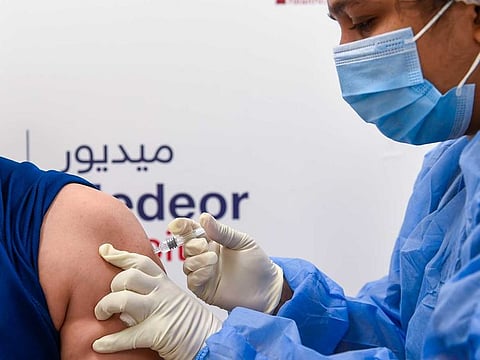COVID-19: Why vaccination alone won’t keep me safe
Vaccines help fight coronavirus, but safety protocols are vital to keeping out the virus

“He caught COVID-19 after vaccination.” I’ve heard this line repeatedly. The implicit suggestion is that the infection was the result of vaccination. Any perceived link is a gross misrepresentation of facts. There’s only a very tiny possibility of that happening. But that could be said of any vaccine and medicine. Has it ever stopped us?
Did we stop polio vaccinations simply because there’s a remote possibility that it could infect someone? Even the Cutter fiasco of 1955 and vaccine contamination in the jab’s early days didn’t slow polio vaccine programmes worldwide. The polio vaccine has been an enormous success. After seven decades, poliomyelitis exists in only a handful of areas worldwide.
Generally, all vaccines are safe. According to the US Department of Health and Human Services, 1 to 2 people may have a severe allergic reaction if 1 million doses of a vaccine are administered. This is true of COVID-19 vaccines too. Only one major allergic reaction was reported for an mRNA vaccine, and some vaccine trials were temporarily halted to study some adverse reactions. And those were found to be the result of underlying conditions.
So how did a vaccinated person catch the virus? Well, most vaccines do not bestow immunity after a dose (Pfizer-BioNTech and Janssen the exceptions). Two doses are normally required to prime the immune system to fight the coronavirus. It will take 28 days after the second dose for a person’s immune system to be robust enough to fight the virus.
Vaccination is not a shield against infection. But it helps reduce the severity of the disease and cuts fatalities. Patients are likely to experience only mild symptoms and will recover quickly. They won’t need hospitalisation.
I used to have influenza vaccinations every year. They worked very well, and even on occasions when I caught the bug, I would recover swiftly with nothing more than a sniffle. So a vaccine is not a passport to a carefree life. The risk of infection exists, although the chances are reduced drastically.
This is precisely why health officials have repeatedly urged the public to continue following safety protocol even after the COVID-19 vaccination. They insist that immunisation is only one route to prevent a coronavirus infection. People have to understand that.
If a person has COVID-19 symptoms soon after vaccination, it’s clear that the infection took place before the vaccination. How’s that? Because the symptoms manifest in 2 to 14 days after exposure to the virus.
Generally, health authorities insist on vaccination appointments. This is to prevent crowds. Crowded places are risky, even if it’s a health centre. So, if you have to queue up for a vaccine, please stand at least 2 metres from the next person.
Please follow the safety precautions to ward off the virus. And if you catch the virus, don’t blame the vaccine. Blame yourself. Where’s my mask?
Sign up for the Daily Briefing
Get the latest news and updates straight to your inbox








